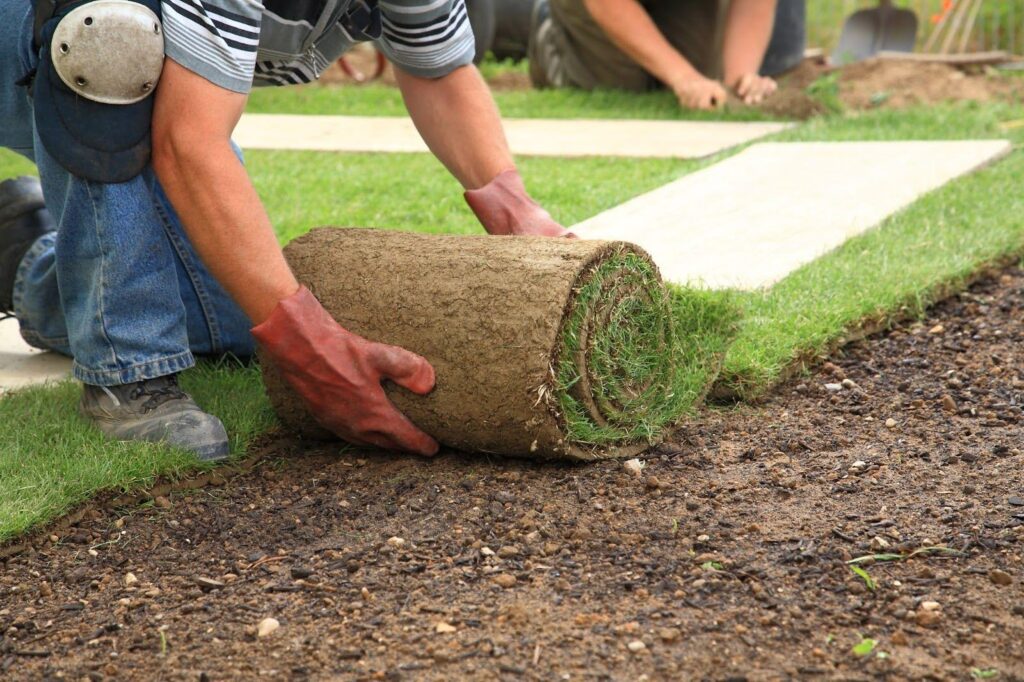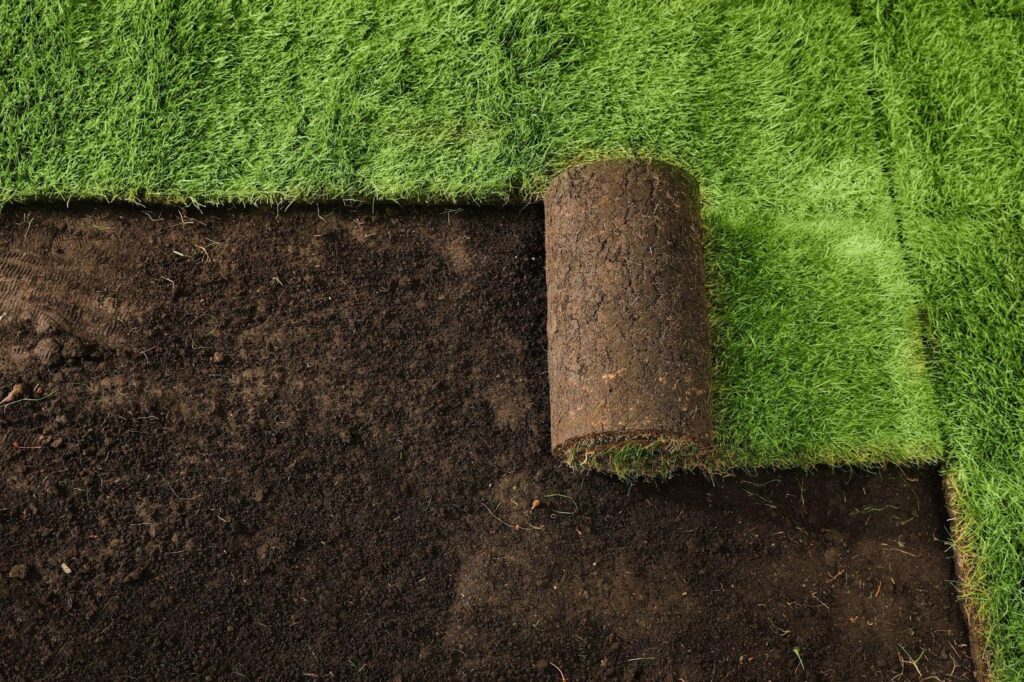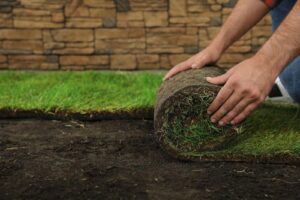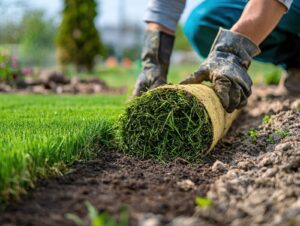Sod farms provide one of the fastest ways to create a lush, fully developed lawn. While seeded lawns require weeks or months to grow in, sod delivers immediate results. Landscapers, homeowners, and property managers choose sod for its convenience, uniform look, and instant curb appeal.
This blog takes you behind the scenes to show how sod goes from a single seed to the vibrant turf that transforms your yard. You’ll learn how farmers select grass varieties, prepare the soil, grow the turf, and manage each stage of production. We’ll follow the journey from the first planting to installation, and explain how to care for your sod so it roots quickly and flourishes.
Selecting the right grass seed
Sod production begins with choosing the right seed. Farmers evaluate climate, soil type, water availability, and the lawn’s intended use before making a selection. These factors determine which grass varieties will grow best and offer lasting results.
Farmers often plant Kentucky bluegrass or tall fescue in cooler regions like Utah. Kentucky bluegrass forms dense, fine-textured turf and handles cold weather well. Tall fescue grows with a coarser texture but resists drought and adapts to variable conditions.
Bermuda grass stands out in warmer climates for its toughness and heat tolerance. Each variety serves a specific purpose, and farmers match the seed to local needs.
To ensure consistent growth and disease resistance, sod farms rely on certified, high-quality seed. These seeds produce uniform, weed-free turf and set the stage for strong, healthy lawns.
Preparing the soil at the sod farm
Before planting begins, sod farmers focus on creating the healthiest soil possible. They start by testing the soil to measure pH levels, nutrient content, texture, and drainage capability. These tests reveal whether the soil can support strong grass growth or needs amending.
A balanced pH and the right mix of nutrients give grass seed the conditions it needs to germinate quickly and develop into thick, resilient turf.
Once they understand the soil’s condition, farmers enrich it with organic matter like compost, peat, or aged manure. These additions help the soil retain moisture and improve structure while introducing beneficial microbes that support plant health. Organic material also loosens dense soils and boosts aeration, which allows air and water to move more freely through the root zone.
Grading comes next. Farmers carefully level and contour the fields to encourage even water distribution and prevent pooling in low areas. Poor drainage can quickly destroy a crop, so getting the grade right is essential.
After grading, they aerate the soil to reduce compaction and ensure roots will be able to grow deep into the ground. Aeration breaks up hardened soil and opens space for roots to spread, water to soak in, and nutrients to move freely.
Planting and growing the grass
Farmers plant the grass seed once the soil is ready using precision equipment that ensures even coverage and consistent depth. These machines help maximize germination and minimize waste.
Germination typically starts within one to three weeks. Cool-season grasses like Kentucky bluegrass may take longer, while warm-season types such as Bermuda establish faster in heat. After sprouting, the grass thickens and develops strong roots, forming a dense green mat.
Over the next several months, farmers water the turf regularly, apply fertilizers at key growth stages, mow frequently to encourage density, and control weeds. They aim to produce a resilient, uniform lawn that can quickly handle transport and adapt to new soil.
Harvesting mature sod
When the turf matures, farmers watch for key indicators of readiness: strong root density, even thickness, and rich, consistent color. Mature sod holds together when lifted and shows healthy root systems.
To harvest the sod, farmers use sod cutters that slice below the root zone and create uniform rolls or slabs. These machines then gently roll the sod into bundles that are easy to handle and transport.
Timing is everything. Farmers typically harvest in cooler parts of the day to preserve moisture and reduce stress. Once harvested, the sod moves quickly from the field to delivery to maintain freshness.
Delivery and installation

Farmers carefully load the sod onto pallets, ensuring airflow and minimal compression. They schedule deliveries immediately after harvest to prevent drying or overheating.
Installers begin work as soon as the sod arrives. They clear the site, level the surface, and moisten the soil before placing the sod in a staggered pattern to promote even growth. After laying the pieces, they press the sod firmly into the soil and often use rollers to improve soil contact and surface smoothness.
Timing plays a critical role. Delays between harvest and installation can weaken the root system. By coordinating every step, growers and installers ensure the sod arrives fresh and ready to take root.
Rooting and establishment in your lawn
Once installed, sod starts rooting into the soil. Although the grass appears still, roots actively grow and spread beneath the surface. This phase sets the tone for long-term success.
Start watering immediately after installation. Keep the sod moist with light, frequent watering for the first two weeks. As the roots develop, reduce frequency and transition to deeper, less frequent watering to encourage depth.
Apply a starter fertilizer high in phosphorus during the first week to support root growth. Avoid high-nitrogen fertilizers early on, as they shift focus to blade growth instead of root strength.
Wait to mow until the grass reaches three to four inches. Set the mower high and trim only the top third of the blades. Avoid heavy foot traffic during this early stage to prevent disrupting root development.
Most sod begins rooting within seven to ten days. Full establishment usually takes four to six weeks, depending on the grass type, weather, and soil. With proper care, the sod thickens, roots deeply, and blends seamlessly into your landscape.
For expert results, choose Monarch Sod

At Monarch Sod, we grow premium, Utah-adapted sod varieties designed to handle the region’s unique climate — from snowy winters to scorching summers. Whether you’re a homeowner, contractor, or landscaper, Monarch Sod delivers high-quality, freshly harvested turf backed by local expertise and professional installation services.
Let us help you create a lawn that looks amazing on day one and stays healthy for years to come. Contact Monarch Sod today to get started on your journey from seed to sod.












